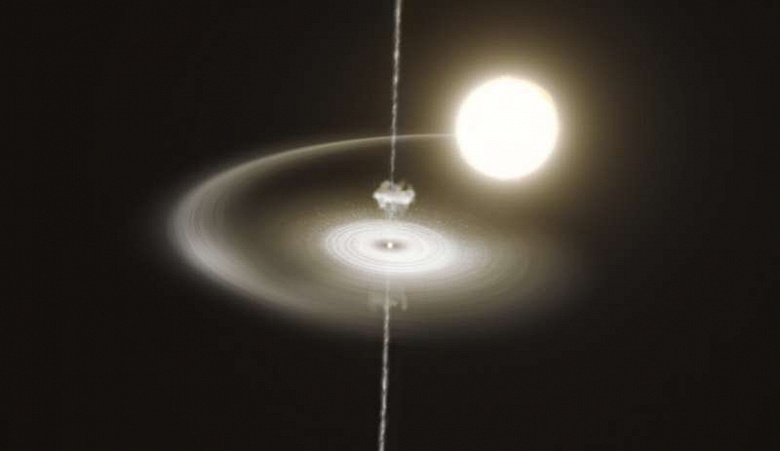Although this discovery solves the mystery of the strange behavior of just one star – J1023, astronomers will continue to study it
PSR J1023 is a special type of pulsar with strange behavior. It is located approximately 4,500 light-years from Earth in the constellation Sextant and orbits another star. For a long time, the pulsar actively pulled matter from its satellite, which accumulated in the disk around the pulsar and slowly approached it.
Since this process of accumulation of matter began, the pulsar began to switch between the two modes. In “high” mode it emits X-rays, ultraviolet and visible light, while in “low” mode it is less bright at these frequencies and emits more radio waves. The pulsar can stay in each mode for a few seconds or minutes and then switch. These switchings have puzzled astronomers.

Astronomers used 12 telescopes to study 1 pulsar
“Our work was aimed at understanding the behavior of this pulsar. We used more than ten ground-based and space-based telescopes,” says Francesco Coti Zelati, co-author of the paper. Over two nights of the year, the telescopes observed the system making more than 280 switches between high and low modes.
“We found that the mode switching is due to a complex interaction between a stream of high-energy particles flying away from the pulsar and matter moving towards the pulsar,” says Koti Zelati. In the low-brightness mode, matter moving towards the pulsar is ejected in a narrow stream perpendicular to the disk. Gradually, this matter is getting closer to the pulsar, and, as it approaches, it falls under the influence of radiation from the pulsating star, heating up at the same time. The system is in high brightness mode and glows brightly in x-ray, ultraviolet and visible light. And when the amount of heated matter in the disk decreases, the star returns to a low-brightness mode.




